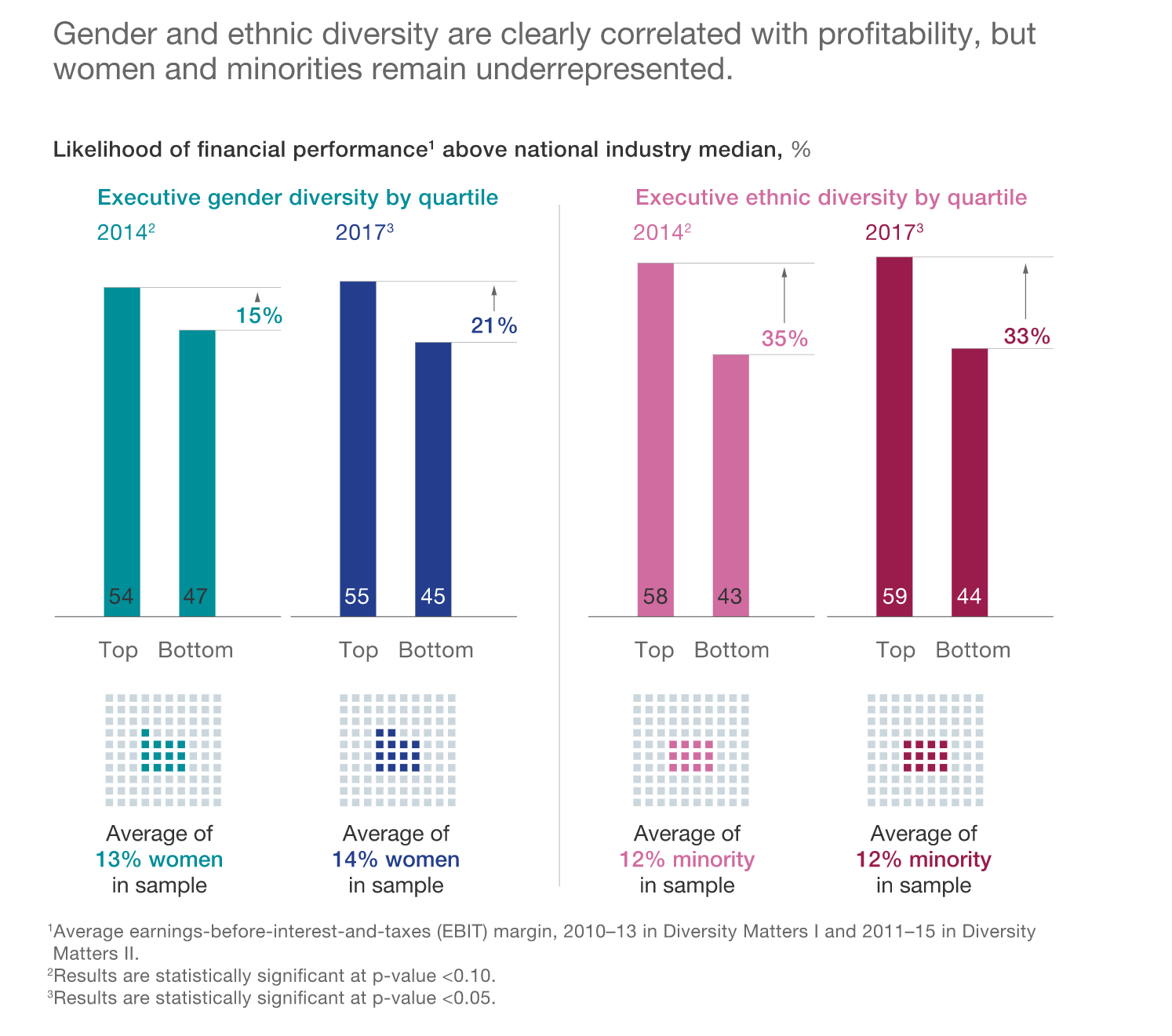In recent years research has demonstrated a correlation between racial and cultural diversity and company profit. According to McKinsey & Company, companies in the top quartile for racial and cultural diversity were 33% more likely to be profitable than companies in the fourth quartile in 2017 (Hunt, Yee, Prince, Dixon-Flye, 2018).

Source: www.mckinsey.com/business-functions/organization/our-insights/delivering-through-diversity#
United States Census Bureau data reports that of the nearly 330 million Americans, 76% of the population is white (United States Census Bureau, 2019). Although whites make up most of the U.S. population, the number of racial and ethnic minorities are increasing. It is projected that by 2044 the majority of the United States will be of a minority population (United States Census Bureau, 2015). As the U.S. population of racial and ethnic minorities increases, not only does the workforce need to change, but the leaders who recruit, train, and retain the workforce needs to be more reflective of the population.
The United States Bureau of Labor Statistics measures labor market activity and productivity amongst other economic metrics. In 2018, data from the U.S. Bureau of Labor Statistics on racial and ethnic minorities in management showed the following statistics:

Source: www.bls.gov/opub/reports/race-and-ethnicity/2018/home.htm
When examining this data, it is important to note some key information that requires additional exploration. The first is that while employed Asian Americans are leading in management positions, they are underrepresented in senior leadership positions. Despite education level, years of experience, and the percentage of minorities working in a business, racial and ethnic minorities are underrepresented at the highest levels of companies’ leadership. Understanding racial and ethnic minorities in this country and in leadership is essential to increasing the numbers of minority business professionals in leadership positions.
Authored by Khaliah Fisher-Grace, PhD(c), MSN, RN, CPHQ, PCCN-K
If you are struggling with a concept or terminology in the course, you may contact capellacontentsupport@capella.edu for assistance.
If you are having technical issues, please contact learningcoach@sophia.org.